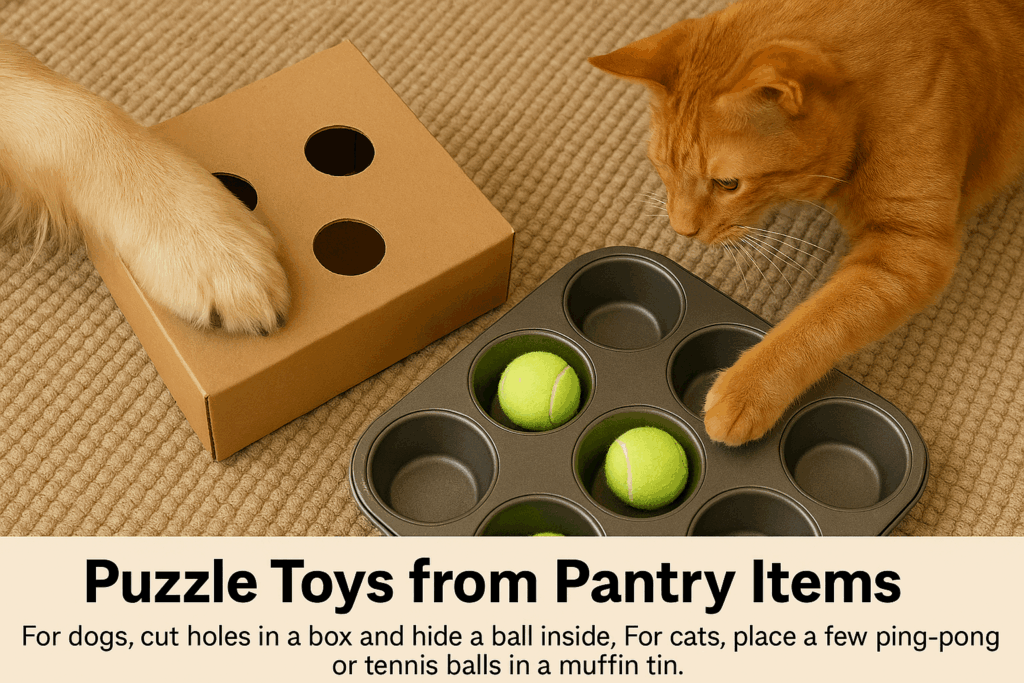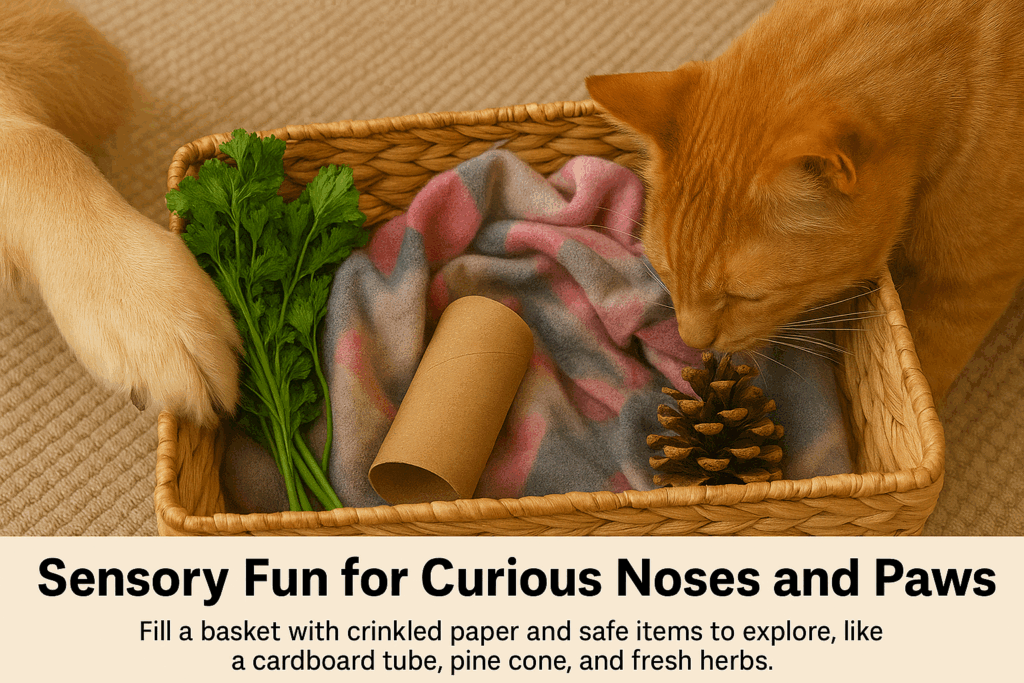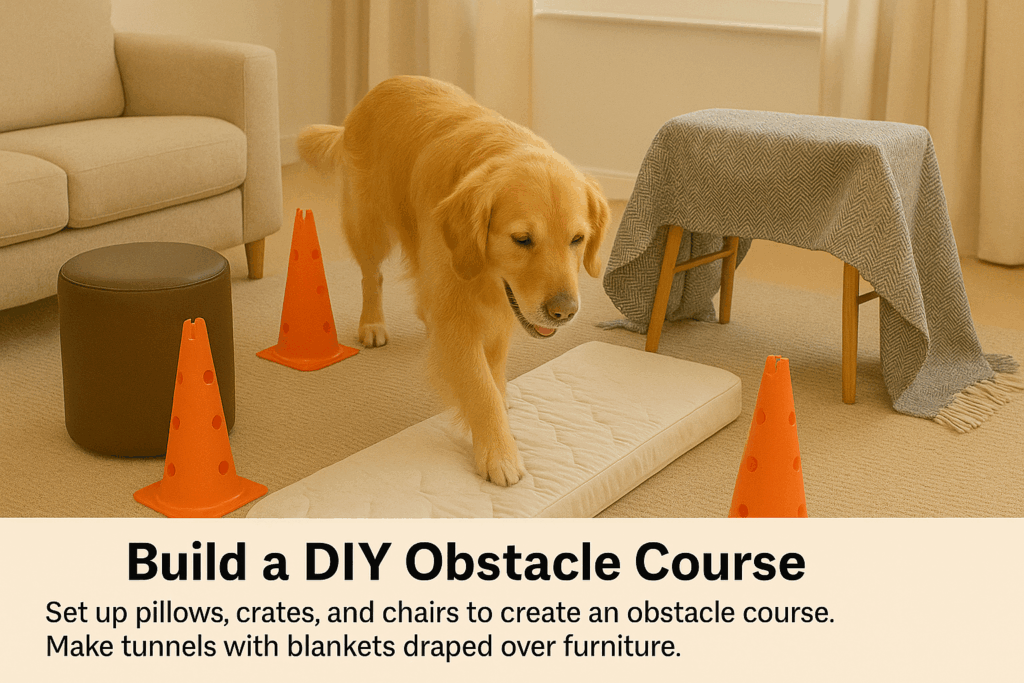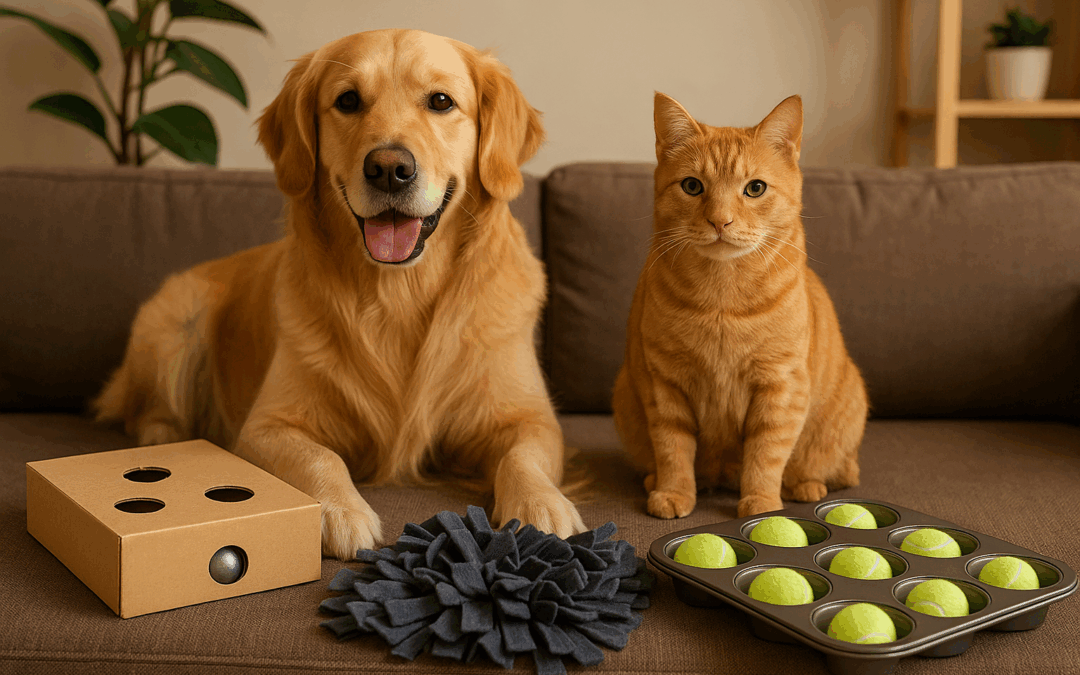Boredom is more than just a minor inconvenience for pets—it can lead to destructive behaviors, anxiety, and even health issues. But keeping your furry friend mentally and physically stimulated doesn’t require fancy gear or expensive toys. With a little creativity and some household basics, you can craft engaging activities that enrich your pet’s life and strengthen your bond.
Puzzle Toys from Pantry Items

Mental stimulation is key to a happy pet, and puzzle feeders are an easy way to provide it. Instead of buying pricey versions, try DIY alternatives using items you already have. A muffin tin with tennis balls covering bits of kibble offers a quick, interactive game for dogs. For cats, hide treats in small paper bags or wrap them in tissue paper for them to paw open. You can also use cardboard tubes or folded paper to create treat-dispensing puzzles that encourage problem-solving and mimic hunting behavior.
Take it a step further by rotating your DIY puzzles weekly to keep them fresh and challenging. Variety prevents predictability and maintains interest. If your pet tends to lose focus, start with easier setups and gradually increase difficulty as they learn.
Sensory Fun for Curious Noses and Paws

Enrichment isn’t just about solving puzzles—it’s also about engaging the senses. Create sensory boxes by filling a bin with safe, pet-friendly items like crumpled paper, fleece strips, dried leaves, or even a sprinkle of catnip. Bury small toys or treats in the mix and let your pet dig, sniff, and forage to their heart’s content. Dogs particularly enjoy snuffle mats made from tied-up strips of fleece, which simulate the act of sniffing for food in grass or dirt.
Changing up scents and textures keeps things novel. For cats, include scents like silvervine or valerian root. For dogs, rotate between spices like cinnamon or dried lavender (in safe amounts). Just be sure to supervise the first few times to ensure they interact safely with each element.
Build a DIY Obstacle Course

When the weather allows—or even indoors if space permits—an obstacle course can offer physical enrichment that’s as fun for you to build as it is for your pet to explore. Use couch cushions, broomsticks, hula hoops, and laundry baskets to create tunnels, jumps, and balance challenges. Dogs can weave through cones or jump over poles, while cats might prefer climbing towers, boxes with holes, or hanging toys to bat around.
Tailor the course to your pet’s size and agility. Keep early attempts simple, and reward generously with praise and treats. Obstacle courses provide not only physical exertion but also opportunities for training and teamwork, making them a win-win for pets and owners alike.

